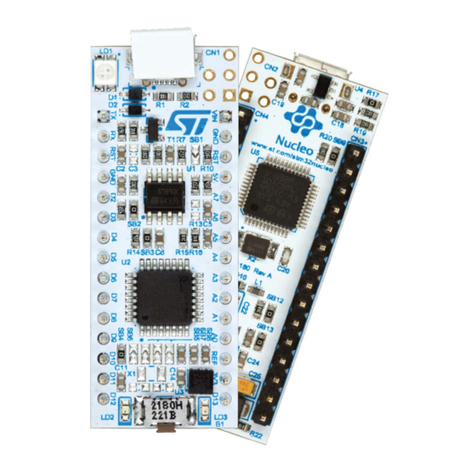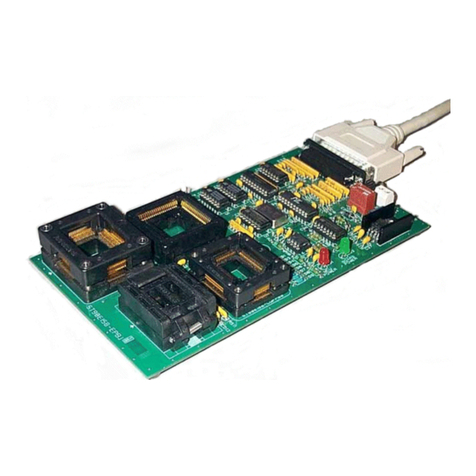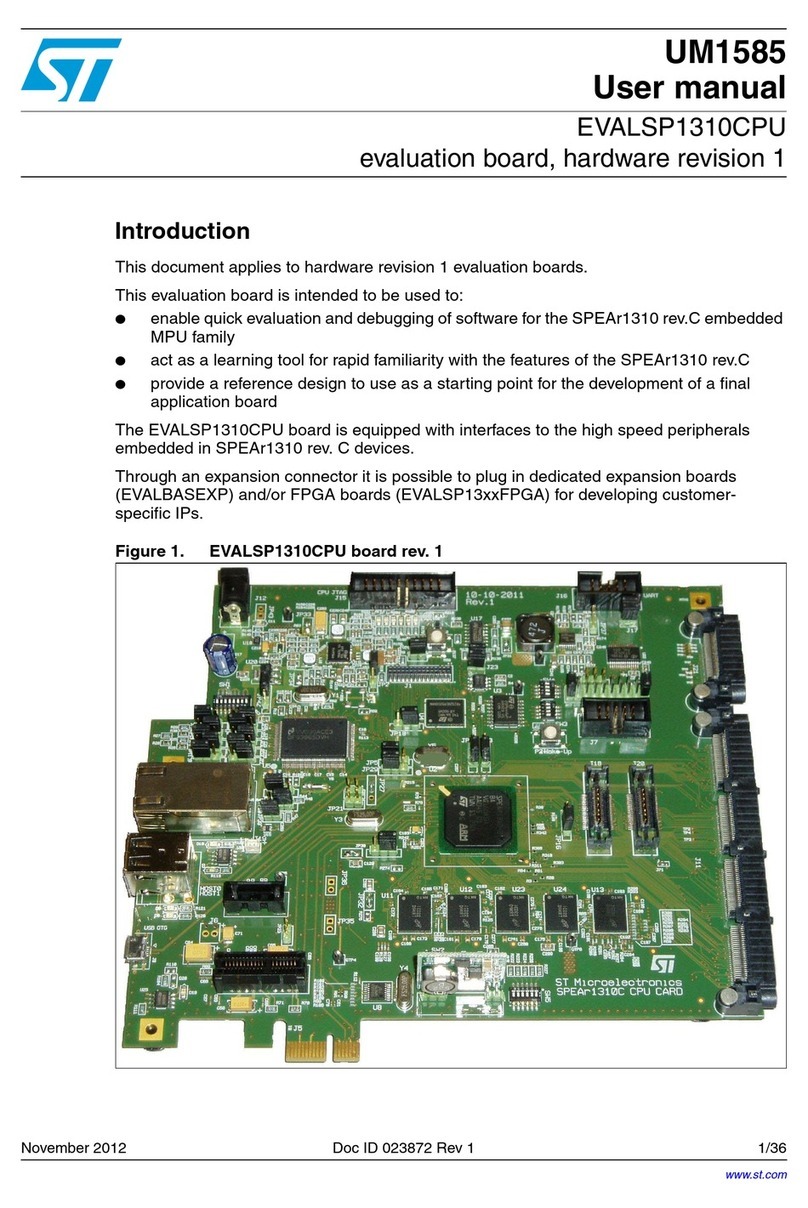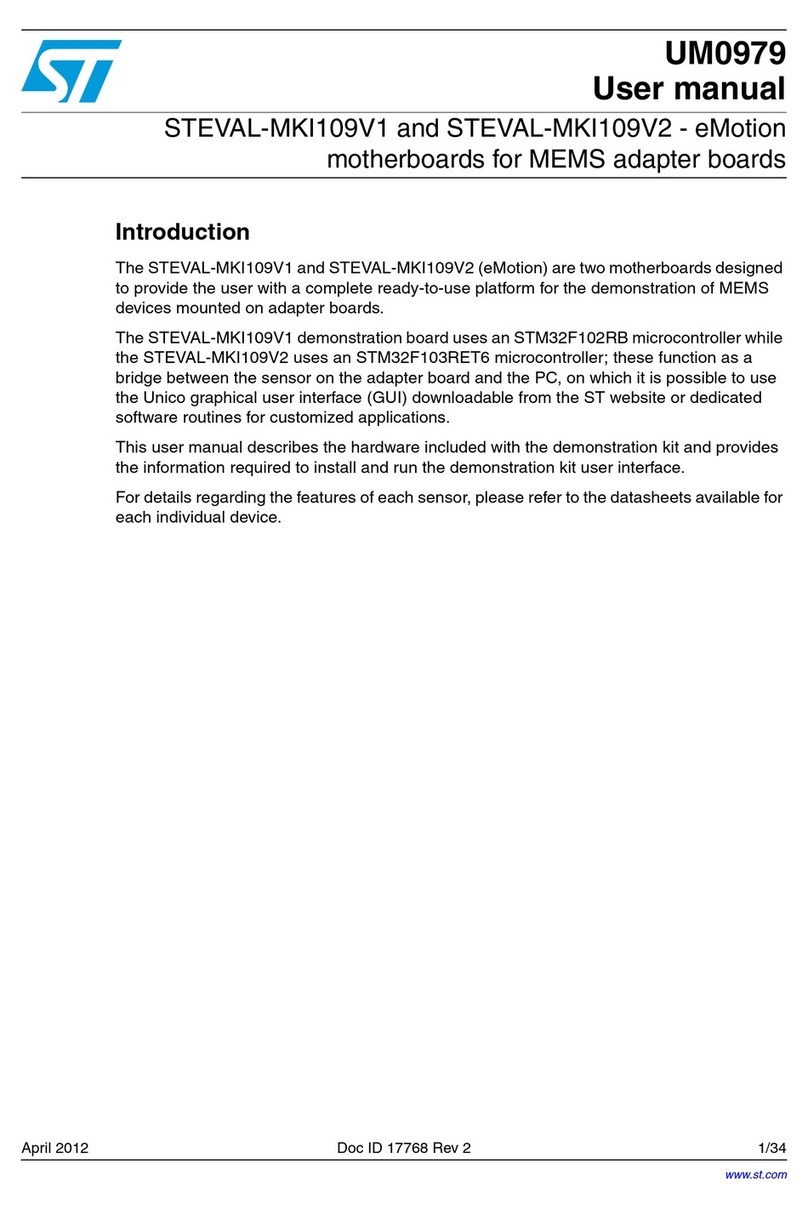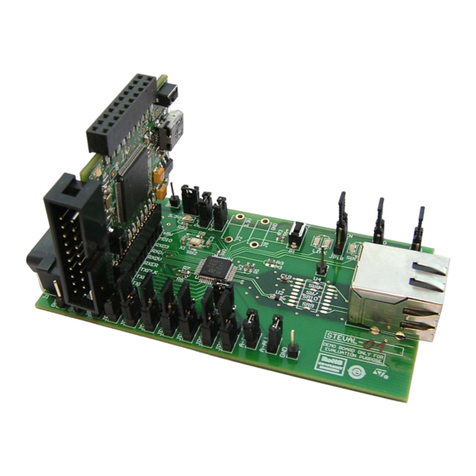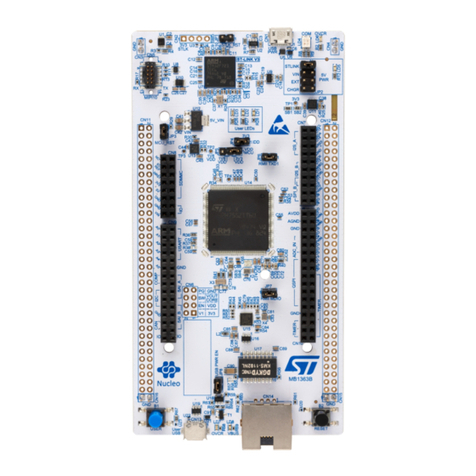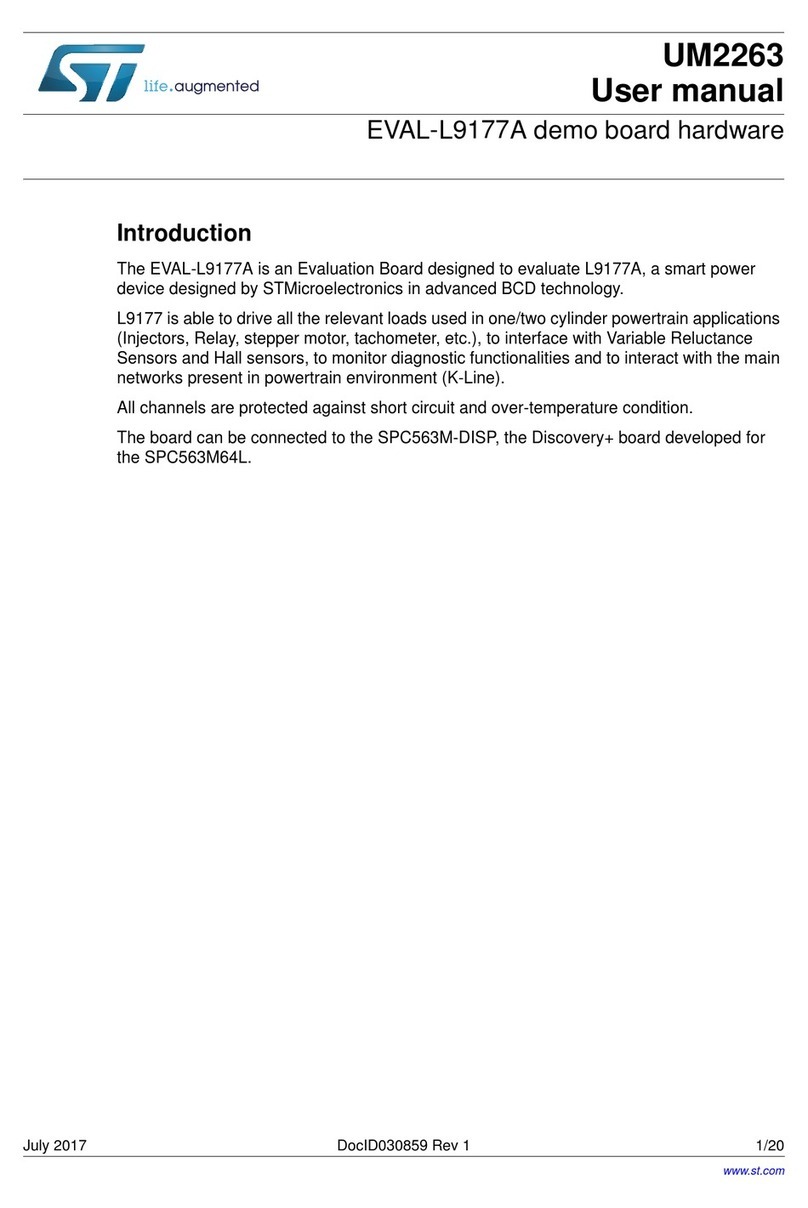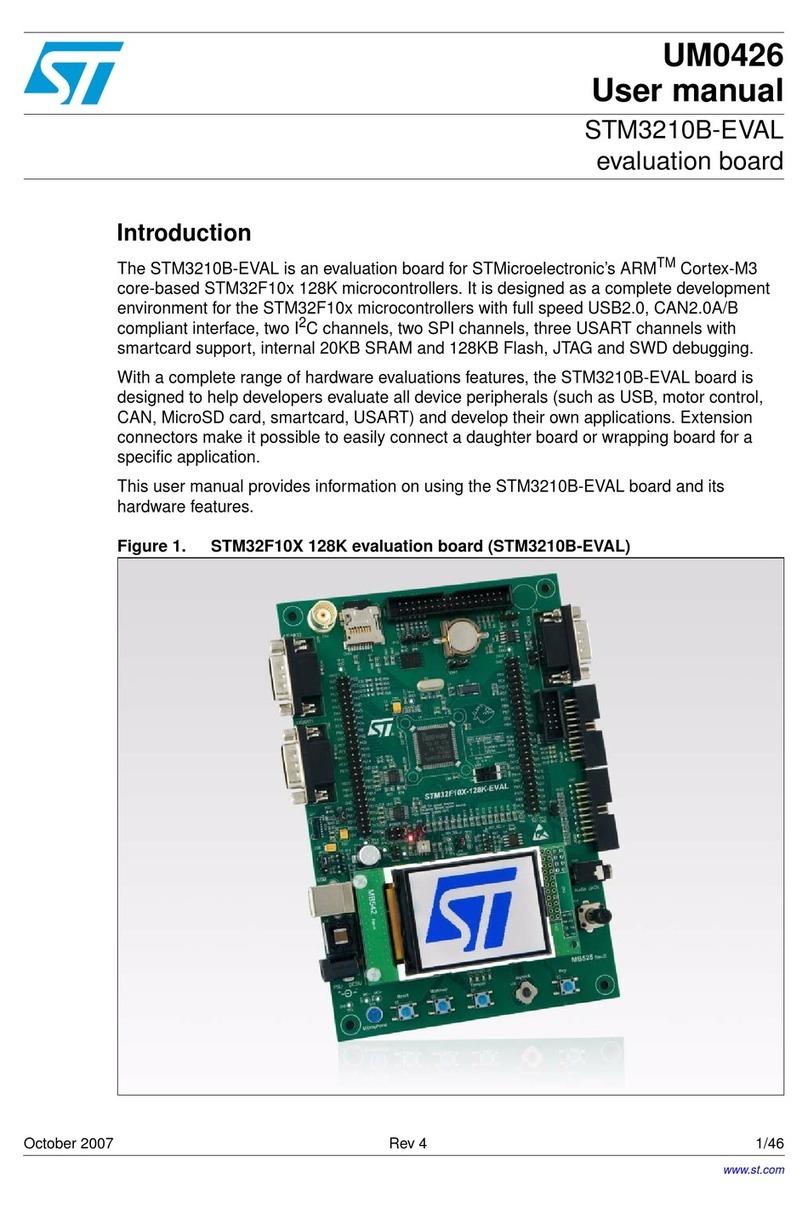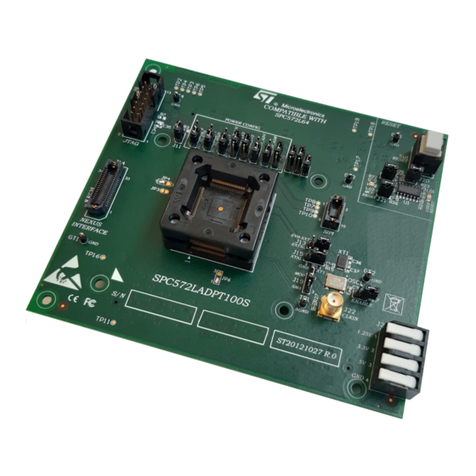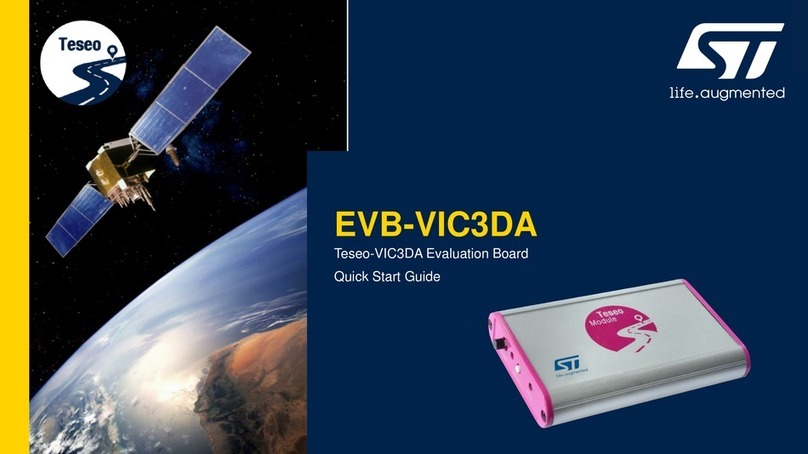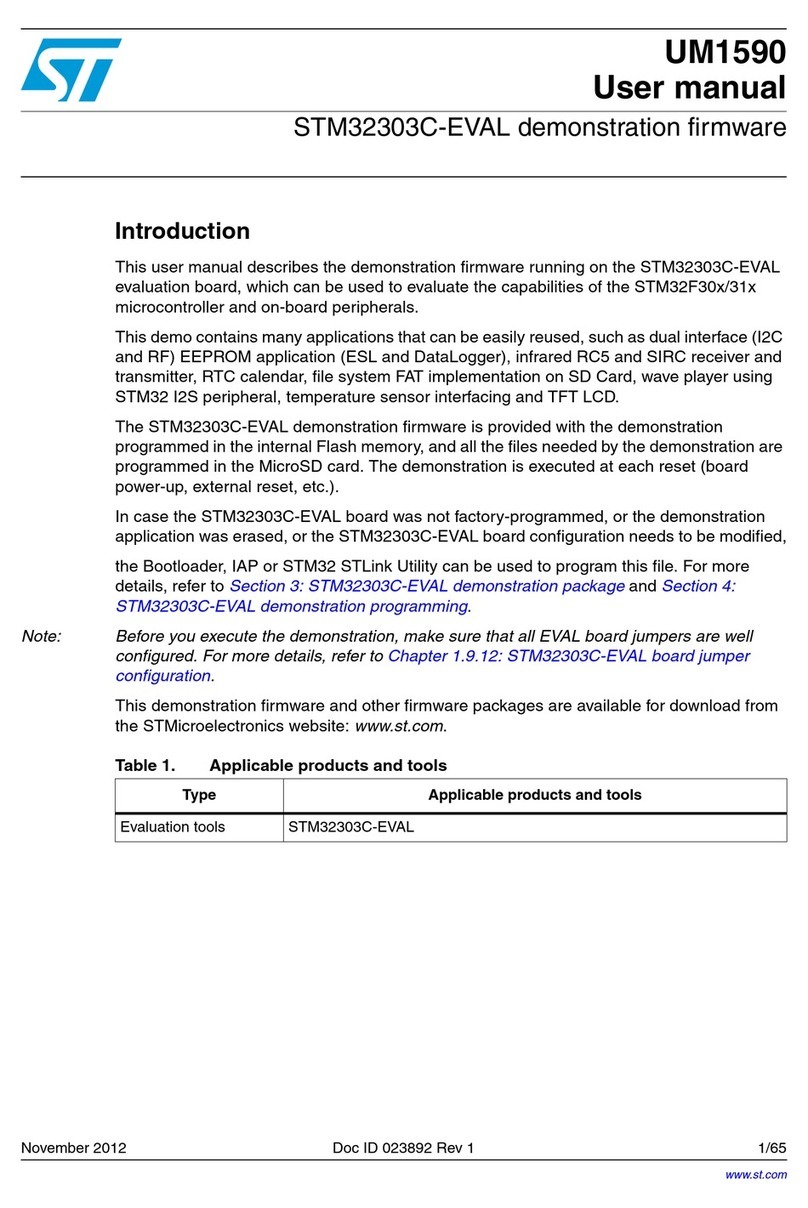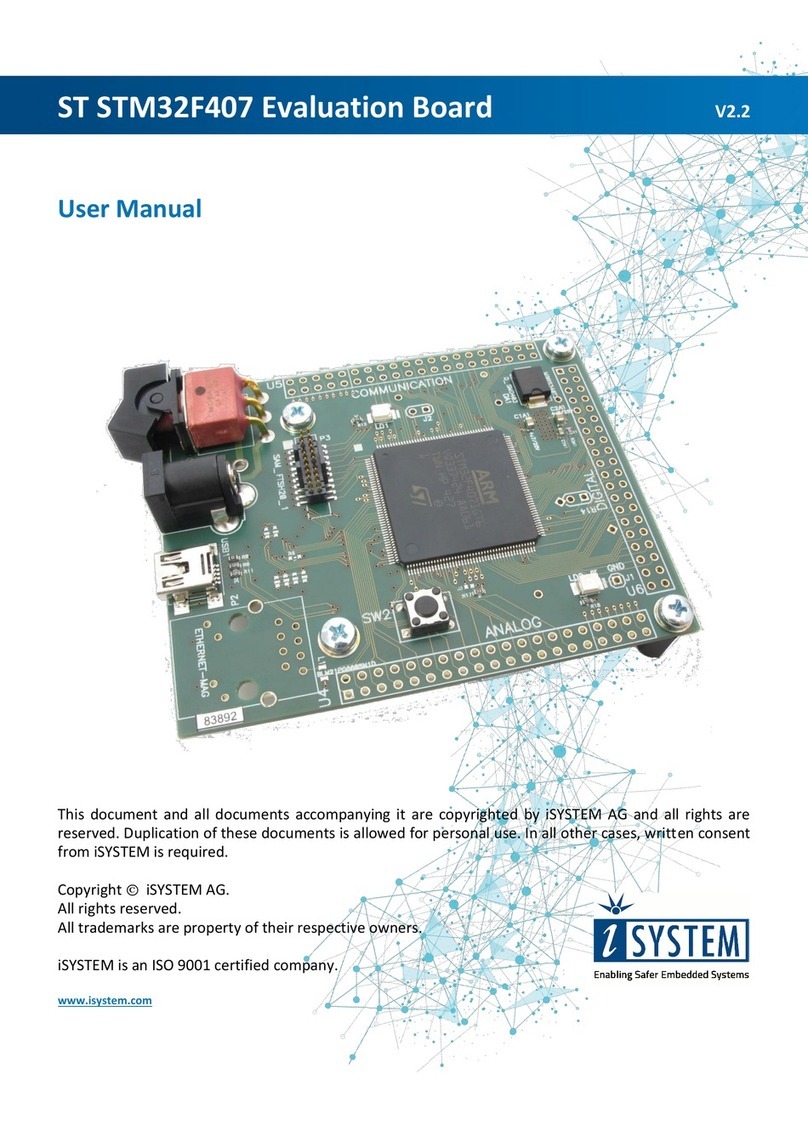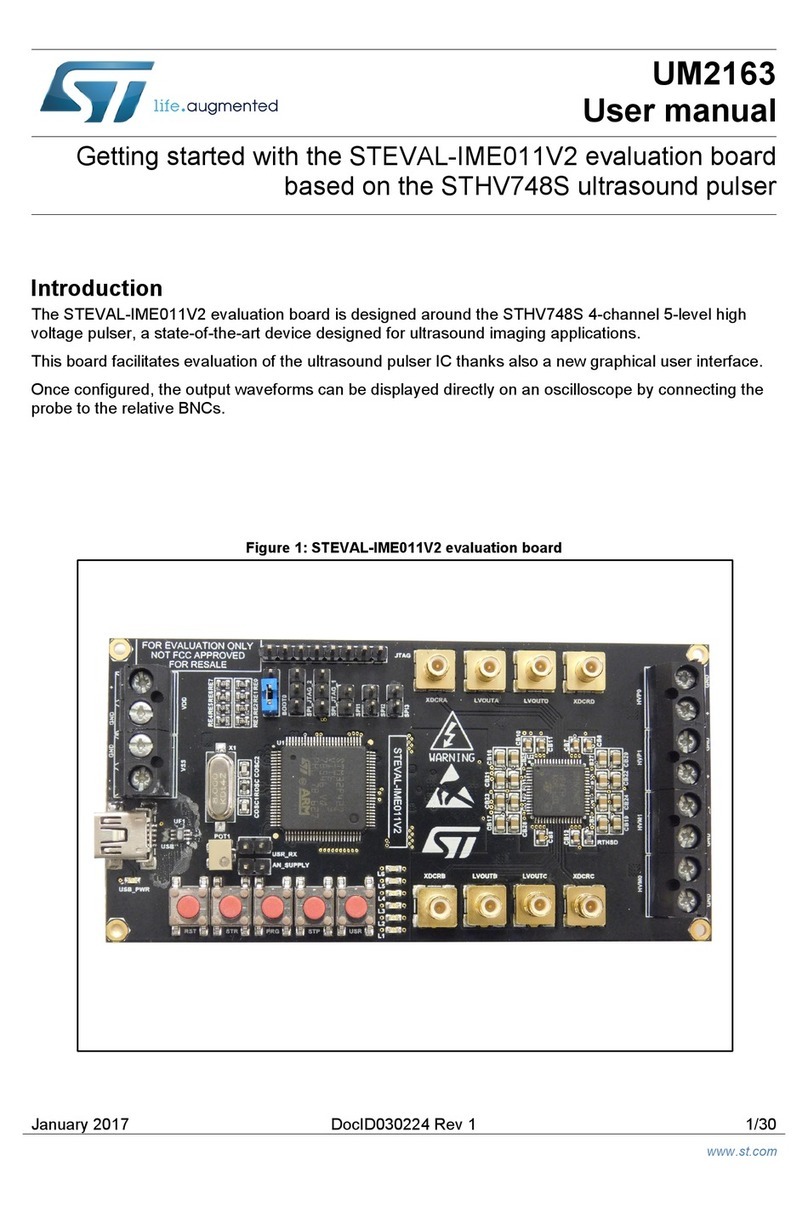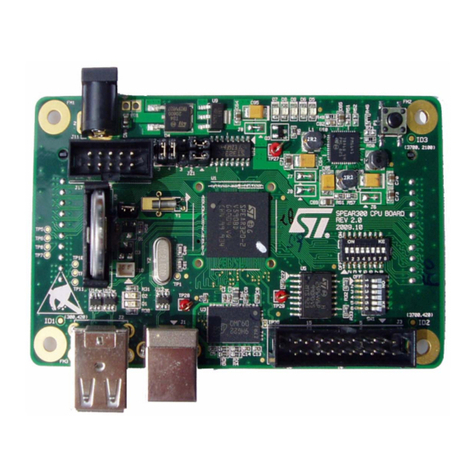STM3220F-EVAL Board
Qing SHAO Page 3 03/06/2009
Contents
1. Hardware Layout and configuration ...................................................................................... 4
1.1 Power Supply.................................................................................................................. 6
1.2 Boot Option ..................................................................................................................... 7
1.3 Clock Source................................................................................................................... 8
1.4 Reset Source................................................................................................................... 8
1.5 Audio ............................................................................................................................... 8
1.6 EEPROM......................................................................................................................... 8
1.7 CAN................................................................................................................................. 8
1.8 RS232 & IrDA................................................................................................................ 10
1.9 Motor Control................................................................................................................. 10
1.10 Smart Card.................................................................................................................. 11
1.11 MicroSD card............................................................................................................... 12
1.12 MEMS.......................................................................................................................... 12
1.13 Analog Input................................................................................................................ 12
1.14 USB OTG FS............................................................................................................... 13
1.15 Ethernet....................................................................................................................... 13
1.16 USB OTG HS.............................................................................................................. 14
1.17 Camera Module........................................................................................................... 14
1.18 PSRAM and OneNAND .............................................................................................. 14
1.19 Development and Debug support ............................................................................... 14
1.20 Display and Input devices ........................................................................................... 14
1.21 IDD measurement and comparator............................................................................. 15
2. Connector ............................................................................................................................ 17
2.1 Daughter board extension connector CN1,2,3 and CN4 .............................................. 17
2.2 Motor control connector CN5 ........................................................................................ 21
2.3 MicroSD connector CN6 ............................................................................................... 22
2.4 Ethernet RJ45 connector CN7...................................................................................... 22
2.5 USB OTG FS Micro-AB connector CN8 ....................................................................... 23
2.6 USB OTG HS Micro-AB connector CN9....................................................................... 23
2.7 CAN D-type 9-pins male connector CN10(CAN2) & CN12(CAN1) .............................. 24
2.8 Audio connector CN11.................................................................................................. 24
2.9 Trace debugging connector CN13................................................................................ 24
2.10 JTAG debugging connector CN14.............................................................................. 25
2.11 Camera module connector CN15................................................................................ 25
2.12 RS232 connector CN16.............................................................................................. 26
2.13 Analog input connector CN17..................................................................................... 26
2.14 Power connector CN18............................................................................................... 26
2.15 TFT LCD connector CN19 .......................................................................................... 27
2.16 Smart card connector CN20........................................................................................ 27
3. Known limitations and bugs on PCB rev A.......................................................................... 28
4. Schematic............................................................................................................................ 29
Appendix A STM3220F-EVAL IO Assignment........................................................................ 49
Appendix B Document Revision History.................................................................................. 53


